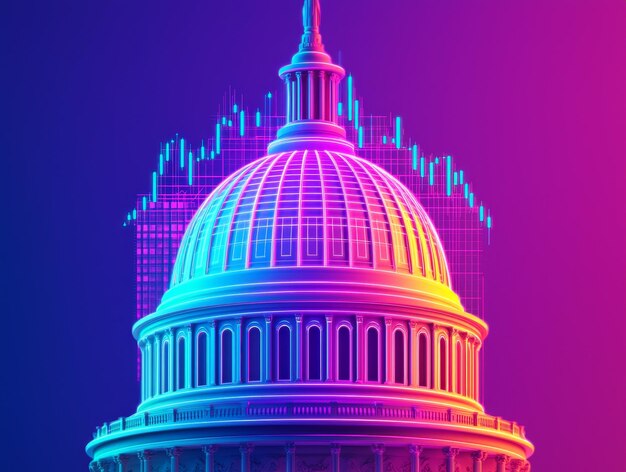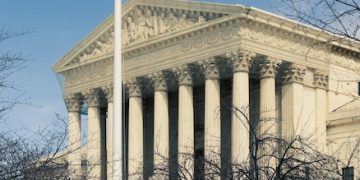US Government Debt Ceiling: Risks, Outcomes, and What It Means for You

The US Government Debt Ceiling Debate involves ongoing discussions about raising the limit on how much debt the federal government can accrue, impacting potential economic stability and fiscal policy outcomes.
The US Government Debt Ceiling Debate: Understanding the Risks and Potential Outcomes is a critical issue that impacts every American. This ongoing discussion about raising the debt ceiling has significant implications for the economy, and understanding its potential consequences is essential.
What is the US Debt Ceiling?
The debt ceiling is the total amount of money that the United States government is authorized to borrow to meet its existing legal obligations, including Social Security, Medicare, military salaries, interest on the national debt, tax refunds, and other payments. It is a limit set by Congress on how much the federal government can borrow.
Historical Context of the Debt Ceiling
The concept of a debt limit dates back to 1917, during World War I, to streamline the process of funding the war effort. Before this, Congress had to approve each individual bond issuance. The debt ceiling provided more flexibility but still maintained congressional oversight.
- World War I: Established to ease wartime financing.
- Post-War Adjustments: Adjusted periodically to meet changing economic conditions.
- Modern Era: Became a recurring point of political contention.
Over the years, the debt ceiling has been raised numerous times, often accompanied by political debates and negotiations. These debates have become more frequent and contentious in recent decades, reflecting deeper partisan divisions over fiscal policy.

Why Does the Debt Ceiling Matter?
The debt ceiling matters because it directly affects the government’s ability to pay its bills. Failure to raise the debt ceiling can lead to severe economic consequences, both domestically and internationally.
Potential Economic Consequences
If the debt ceiling is not raised in time, the US government could default on its obligations. This could trigger a cascade of negative effects, including:
- Government Shutdown: Non-essential government services could be suspended.
- Delayed Payments: Social Security, Medicare, and military payments could be delayed.
- Increased Borrowing Costs: Investors may demand higher interest rates to compensate for the increased risk of default.
A default could also damage the credibility of the United States, leading to a loss of investor confidence and potentially triggering a recession. The global financial system relies heavily on the stability of US Treasury securities, and a default could have far-reaching consequences.
The debt ceiling debate has significant economic implications. Raising the debt ceiling allows the government to continue funding essential services and avoid the risk of default. Failure to do so can lead to economic instability and uncertainty.
The Political Landscape of the Debt Ceiling
The debt ceiling is often a focal point of political battles between the two major parties in the United States. Democrats and Republicans often have differing views on fiscal policy and government spending, leading to contentious negotiations over raising the debt ceiling.
Partisan Views on Fiscal Policy
Democrats generally support raising the debt ceiling to avoid economic catastrophe and to continue funding government programs. They often argue for a combination of spending cuts and tax increases to address the national debt.
Republicans, on the other hand, often use the debt ceiling as leverage to push for significant spending cuts and fiscal reforms. They argue that the government should reduce the size and scope of its operations to control the national debt.
The debt ceiling has become a political football, with both parties using it to advance their agendas and score political points. This has led to increasingly tense and protracted negotiations, often bringing the country to the brink of default.

Potential Outcomes of the Debt Ceiling Debate
The debt ceiling debate can have several potential outcomes, ranging from a smooth resolution to a full-blown crisis. Understanding these potential outcomes is crucial for assessing the risks and preparing for the future.
Possible Scenarios
There are several scenarios that could play out during a debt ceiling debate:
- Timely Agreement: Congress reaches a bipartisan agreement to raise the debt ceiling before the deadline.
- Last-Minute Deal: A deal is reached at the last minute, averting a default but causing significant uncertainty and market volatility.
- Short-Term Extension: Congress approves a short-term extension of the debt ceiling to buy more time for negotiations.
Each of these scenarios has different implications for the economy and financial markets. A timely agreement is generally seen as the most desirable outcome, while a last-minute deal or short-term extension can create anxiety and instability.
The potential outcomes depend on the willingness of both parties to compromise and find common ground. In the absence of compromise, the risk of default increases, with potentially severe consequences.
How the Debt Ceiling Impacts the Economy
The debt ceiling can have a significant impact on the economy, affecting everything from interest rates and investor confidence to government spending and economic growth.
Effects on Interest Rates and Investments
Uncertainty surrounding the debt ceiling can lead to increased volatility in financial markets. Investors may become hesitant to invest in US Treasury securities, driving up interest rates and increasing borrowing costs for the government.
Higher interest rates can also ripple through the economy, affecting mortgage rates, business loans, and other forms of credit. This can slow down economic growth and make it more difficult for businesses to invest and create jobs.
The debt ceiling issue highlights the interconnectedness of fiscal policy and economic stability. A well-managed debt ceiling process can foster confidence and stability, while a poorly managed one can create uncertainty and risk.
Navigating the Future Debt Ceiling Debates
As the national debt continues to grow, debt ceiling debates are likely to become more frequent and contentious. Finding ways to navigate these debates effectively is essential for maintaining economic stability and fiscal responsibility.
Strategies for Effective Negotiation
Several strategies can help to improve the debt ceiling negotiation process:
- Bipartisan Dialogue: Encourage open and respectful dialogue between Democrats and Republicans.
- Long-Term Planning: Develop a long-term fiscal plan that addresses the national debt and sets clear goals for spending and revenue.
- Transparency: Increase transparency in the budget process to help the public understand the trade-offs and choices involved.
By adopting these strategies, policymakers can work together to find sustainable solutions to the debt ceiling issue and promote long-term economic prosperity.
Navigating future debt ceiling debates will require a commitment to compromise, collaboration, and responsible fiscal management. By working together, policymakers can avoid the risks of default and ensure the stability of the US economy.
| Key Point | Brief Description |
|---|---|
| 💰 Debt Ceiling Definition | Limit on how much the US government can borrow to meet existing obligations. |
| ⚠️ Consequences of Default | Government shutdown, delayed payments, and increased borrowing costs. |
| 🏛️ Political Debate | Democrats and Republicans clash over fiscal policy and spending cuts. |
| 📈 Economic Impact | Affects interest rates, investor confidence, and government spending. |
Frequently Asked Questions
▼
As of 2023, the debt ceiling is approximately $31.4 trillion. This limit has been reached multiple times, requiring Congress to take action to either raise or suspend it.
▼
If the debt ceiling is not raised, the US government may be unable to pay its obligations, leading to a potential default on its debt. This could have severe economic consequences.
▼
The US has faced numerous debt ceiling crises, particularly in recent decades, as partisan divisions over fiscal policy have intensified. These crises often lead to tense negotiations.
▼
▼
The US national debt is owned by a variety of entities, including domestic investors, foreign governments, and the Federal Reserve. A significant portion is also held by government trust funds.
Conclusion
The US Government Debt Ceiling Debate is a critical issue with far-reaching implications for the economy and the financial well-being of Americans. By understanding the risks and potential outcomes, citizens can engage more effectively in the democratic process and advocate for responsible fiscal policies that promote economic stability and prosperity.





